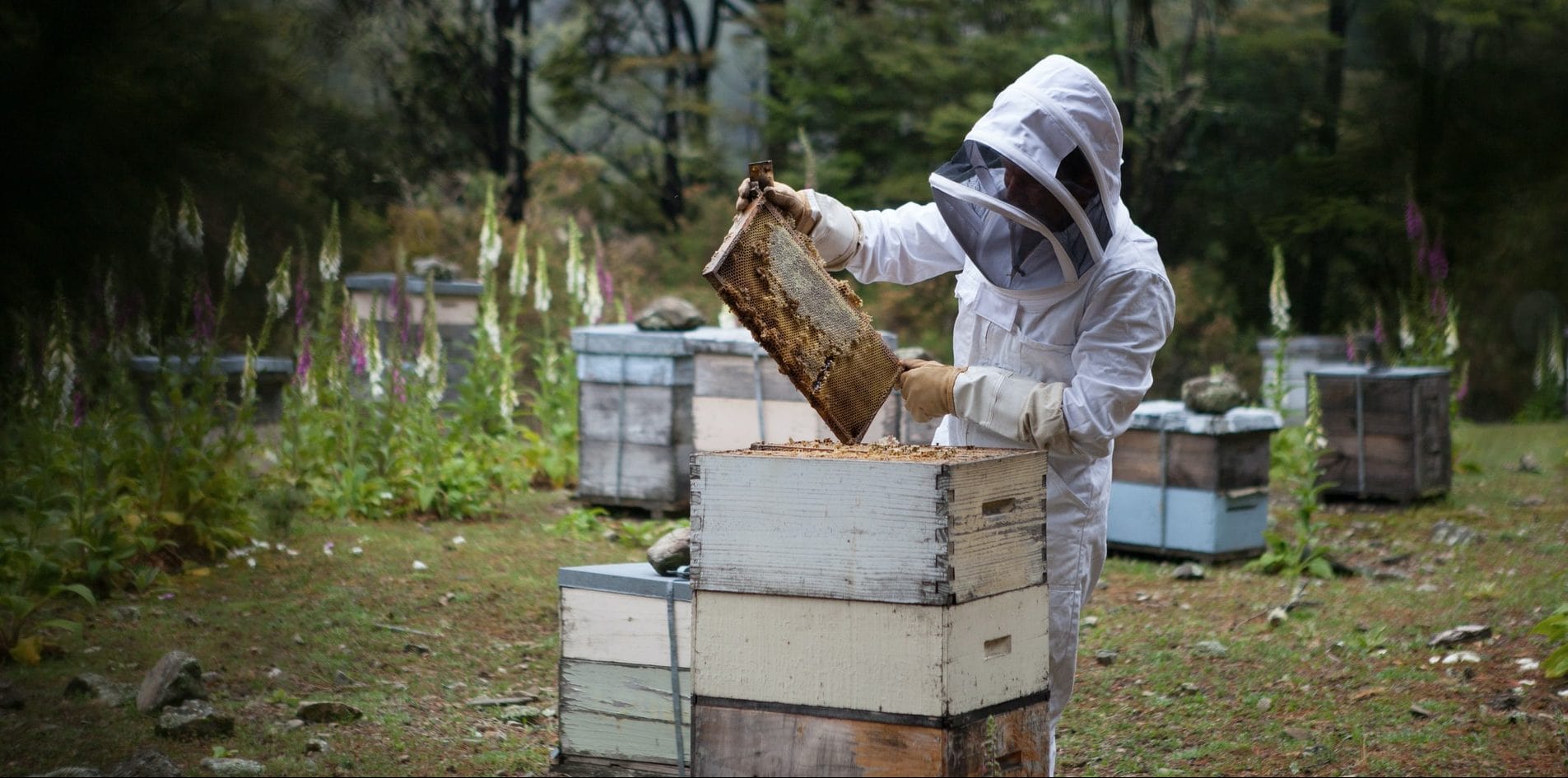
Como salvar as abelhas: sete maneiras de ajudar
As abelhas são um dos principais polinizadores do nosso planeta e são responsáveis pela saúde de um grande número de plantas. Sem as abelhas, não seríamos capazes de sustentar a agricultura necessária para alimentar a população da Terra. Infelizmente, as colônias de abelhas estão diminuindo em algumas áreas e, em outras, estão desaparecendo completamente. Aprenda como salvar as abelhas e descubra as melhores maneiras de ajudar esse inseto único.
Fatos chocantes sobre a síndrome do colapso das colônias de abelhas
A síndrome do colapso das colônias de abelhas é uma doença relativamente recente que afeta populações de abelhas ao redor do mundo. O principal sintoma desse distúrbio é o desaparecimento de todas as abelhas operárias da colmeia. As abelhas operárias deixam para trás a abelha rainha e algumas abelhas enfermeiras para cuidar das larvas jovens, além de bastante comida. Abaixo estão cinco fatos que você precisa saber sobre o transtorno do colapso das colônias de abelhas.
- Os cientistas não sabem exatamente o que causa o colapso das colônias de abelhas. As causas sugeridas incluem um vírus ou parasita, pesticidas ou mudanças ambientais, bem como mudanças climáticas e perda de habitat, mas a ciência ainda é completamente incerta.
- Devido ao colapso das colônias de abelhas, algumas espécies estão agora ameaçadas de extinção. Em 2017, o Serviço de Pesca e Vida Selvagem dos EUA anunciou uma notícia surpreendente: várias espécies de abelhas serão adicionadas à lista de espécies ameaçadas de extinção.
- As abelhas são responsáveis pela produção de mais de US$ 15 bilhões em produtos agrícolas e de cuidados com a pele a cada ano.
- As amêndoas são polinizadas quase exclusivamente por abelhas. Agora, os produtores de amêndoas têm que pagar mais de três vezes o custo para os apicultores trazerem colmeias para polinizar suas plantações. Isso leva a preços mais altos para o consumidor.
- Até agora, o colapso das colônias de abelhas custou à indústria apícola US$ 2 bilhões para substituir as 10 milhões de colmeias afetadas pelo distúrbio.
Como ajudar a população de abelhas: Sete ideias
Há muitas maneiras de ajudar a salvar as abelhas e ajudar o meio ambiente. Quer você esteja se perguntando como salvar as abelhas ou como ajudar espécies ameaçadas de extinção em geral, use essas ideias para ajudar a população de abelhas e proteger a agricultura.
1. Comece a desenvolver um jardim com seus amigos, parentes ou conhecidos
Plante uma horta com vegetais, ervas e flores que atraiam abelhas. Aumente a conscientização sobre sua causa iniciando uma arrecadação de fundos com seu círculo de conhecidos, amigos ou parentes e coletando doações para comprar suprimentos de jardinagem. Aqui estão algumas diretrizes úteis sobre o que incluir em seu jardim de abelhas:
- Comece tornando seu jardim amigável às abelhas plantando flores azuis, roxas ou amarelas. As abelhas não conseguem ver tons vermelhos, então evite flores vermelhas e rosas para que elas possam realmente chegar ao pólen.
- As abelhas gostam especialmente de ervas como lavanda, hortelã, coentro e manjericão. Você também pode cultivar espécies de plantas nativas em sua área, o que ajuda tanto as abelhas quanto o meio ambiente.
- As sementes de vegetais folhosos são um importante alimento de inverno para as abelhas. Plantas como couve, couve-folha e repolho deixam sementes após a colheita.
- Coloque uma pequena bandeja com água e troque-a diariamente. Incluir algo para beber ajudará a manter as abelhas no seu jardim por mais tempo.
- Não utilize pesticidas, pois mesmo os pesticidas orgânicos são prejudiciais às abelhas. Use outros métodos de repelir pragas, como plantar alho ou fazer rotação de culturas, para manter seu jardim e suas abelhas saudáveis.
2. Apoiar a agricultura local
Como muitos insetos, as abelhas têm uma relação simbiótica com o ambiente local, ajudando as plantações a prosperar. As abelhas e outros polinizadores são responsáveis pela produção de 87% das plantações de alimentos do mundo. Ao apoiar a agricultura local, você ajuda as populações locais a viver e prosperar. Sempre que possível, faça compras no mercado local de produtores rurais e compre produtos para a pele feitos com cera de abelha local.
3. Arrecadar dinheiro para caridade
Inicie uma “campanha para salvar as abelhas” e colete doações para instituições de caridade ou organizações ambientais que ajudem a salvar populações de abelhas. Ou ajude sua comunidade e comece uma arrecadação de fundos para beneficiar apicultores e agricultores locais. Compartilhe a arrecadação de fundos nas redes sociais para reunir ainda mais apoio para salvar as abelhas.
Inicie uma campanha em PavelAndreev.ORG.
4. Construindo habitats para abelhas
O habitat natural pré-construído preferido das abelhas é simplesmente um bloco de madeira não tratado com muitos furos. As abelhas adoram forragear e fazer ninhos, e criar habitats para elas incentivará esses polinizadores benéficos a retornarem à sua vizinhança para coletar o pólen e o néctar de que precisam. Cubra os buracos com tela de arame para garantir que os pássaros deixem as abelhas em paz. Por natureza, muitas espécies de abelhas são solitárias, então você não precisa se preocupar em atrair uma colmeia inteira para o seu quintal.
5. Seja voluntário na sua sociedade local de apicultura
A maioria das áreas tem uma sociedade local de apicultores e muitas delas precisam da ajuda de voluntários. Você pode doar seu tempo para ajudar a se conectar com eventos da comunidade ou organizar uma arrecadação de fundos sem fins lucrativos para coletar doações para a comunidade.
6. Junte-se ao clube de apicultura local
Se você tem interesse em ter sua própria colmeia, ingressar em um clube de apicultura é uma ótima maneira de começar. Participar de um clube local de apicultura pode ser uma maneira divertida de conhecer outras pessoas em sua comunidade que se preocupam com o meio ambiente e desenvolver suas habilidades de apicultura no processo. Se você ainda não estiver pronto para participar de um clube de apicultura, talvez queira conferir algumas opções online, como grupos de apicultura no Facebook ou vídeos no YouTube sobre o assunto.
7. Patrocine uma colmeia
À medida que as populações de abelhas diminuem, o custo da polinização comercial por abelhas está disparando. Isso significa que os agricultores têm que pagar mais para polinizar suas plantações, repassando esses custos ao consumidor na forma de preços mais altos. Ao patrocinar uma colmeia, você ajuda apicultores e agricultores a reduzir custos e permanecer no negócio.
Comece hoje mesmo a campanha para ajudar e salvar as abelhas
Ajude as abelhas iniciando uma arrecadação de fundos para apoiar os esforços de conservação. As abelhas são importantes para garantir o abastecimento agrícola do mundo, e a saúde da população de abelhas é importante para cada um de nós. Entre em contato comigo hoje mesmo para começar a arrecadar fundos e veja como você pode fazer a diferença com um pouco de esforço!

Qual é o preço aproximado para publicar um livro?
Se seu objetivo principal é simplesmente imprimir seu livro, usar plataformas de autopublicação gratuitas pode ser a solução certa. Escrever em si é a maior recompensa para muitas pessoas, e publicar pode ser apenas uma formalidade. No entanto, se você deseja vender seu livro e atingir um público amplo, precisa investir em serviços profissionais. Sem eles, é difícil competir com livros publicados tradicionalmente. Fatores como edição profissional...

O que é um filantropo e filantropia?
Qualquer um pode ser filantropo e ser mais eficaz em efetuar mudanças. Veja como. Um filantropo é uma pessoa que doa tempo, dinheiro, experiência, habilidades ou talento para ajudar a criar um mundo melhor. Qualquer um pode ser filantropo, independentemente de status ou patrimônio líquido. O que é filantropia? O dramaturgo grego Ésquilo cunhou o termo filantropia no século V a.C. Significava "amor à humanidade". Hoje, filantropia significa genero...

Transtorno Mental Narcisista: Sintomas, Tratamento e Como Podemos Ajudar
A saúde mental está se tornando cada vez mais importante na sociedade, e o interesse por esse tópico está crescendo significativamente. As doenças mentais afetam um grande número de pessoas no mundo todo. Um dos transtornos de saúde mental menos conhecidos é o transtorno de personalidade narcisista. O transtorno de personalidade narcisista é uma condição que muitas vezes não é diagnosticada, o que leva a um sofrimento ainda maior para os afetado...

Como arrecadar dinheiro rapidamente para adotar uma criança
As crianças são o maior presente que uma pessoa pode receber ao longo da vida! E se o seu destino não foi gentil o suficiente para permitir que você fosse pai ou mãe, instituições e organizações encontraram uma maneira de dar esse direito a qualquer um que tenha o coração e a alma para isso. De acordo com estatísticas de pesquisas realizadas em 2018, o número de 430.000 crianças trabalha a favor das famílias adotivas. Para crianças adotadas, o l...

